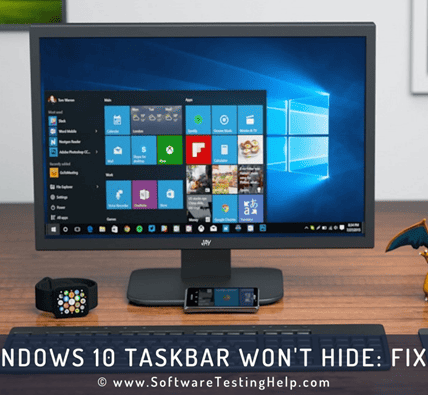Introduction
In the digital age, the way we consume content has evolved dramatically. Gone are the days when reading was confined to paperbacks and hardcovers. Enter the world of flipping books—a revolutionary format that brings the traditional reading experience to the digital realm. But what exactly is a flipping book, and how does it enhance our reading and sharing experience? Let’s dive in.
The Concept of Flipping Books
Definition and Characteristics
A flipping book is a digital publication that mimics the experience of reading a physical book or magazine. Unlike traditional e-books, flipping books have pages that “flip” realistically, providing a more engaging and interactive experience. They can include multimedia elements such as videos, audio clips, and hyperlinks, making them a dynamic tool for presenting content.
How Flipping Books Differ from Traditional E-books
While traditional e-books are essentially digital versions of print books, flipping books offer a more immersive experience. The ability to flip pages, zoom in on text, and interact with multimedia content sets flipping books apart. This format not only replicates the tactile feel of a physical book but also leverages the advantages of digital media.
Benefits of Flipping Books
Interactive User Experience
Flipping books provide a unique reading experience by incorporating interactive elements. Readers can click on links, watch embedded videos, and listen to audio clips, making the content more engaging and informative.
Enhanced Engagement
The interactive nature of flipping books helps maintain reader interest. The realistic page-turning effect, combined with multimedia features, keeps readers hooked and encourages them to explore the content thoroughly.
Accessibility and Portability
Flipping books can be accessed on various devices, including smartphones, tablets, and computers. This portability allows readers to carry their entire library with them, making reading on-the-go convenient and enjoyable.
Creating a Flipping Book
Tools and Software Available
There are several tools and software options available for creating flipping books, such as FlipHTML5, Issuu, and FlippingBook Publisher. These platforms offer user-friendly interfaces and a variety of customization options to help you create professional-looking flipping books.
Step-by-Step Guide to Creating a Flipping Book
Choose Your Tool: Select a flipping book software that meets your needs.
Prepare Your Content: Gather and organize the text, images, and multimedia elements you want to include.
Upload Your Files: Import your content into the flipping book software.
Customize the Design: Use the software’s design tools to customize the layout, colors, and interactive elements.
Publish and Share: Once you’re satisfied with your flipping book, publish it and share the link with your audience.
Flipping Book Formats
Supported File Types
Flipping books can be created from various file types, including PDFs, Word documents, and images. Most flipping book software supports these formats, making it easy to convert your existing content into a flipping book.
Compatibility with Devices and Browsers
Modern flipping book software ensures compatibility with multiple devices and browsers. This cross-platform accessibility means your flipping book can be viewed seamlessly on any device, providing a consistent experience for all readers.
Flipping Books in Different Industries
Education
In the education sector, flipping books are used to create interactive textbooks and learning materials. They enhance the learning experience by incorporating videos, quizzes, and other interactive elements.
Marketing
Flipping books are an effective marketing tool for businesses. Companies use them to create engaging product catalogs, brochures, and presentations that capture the audience’s attention and convey information in a visually appealing way.
Publishing
Publishers use flipping books to produce digital versions of magazines, journals, and books. This format allows them to reach a broader audience and provide a more interactive reading experience.
Case Studies: Success Stories with Flipping Books
Educational Institutions
Many schools and universities have adopted flipping books to enhance their educational materials. For instance, some universities have replaced traditional textbooks with interactive flipping books, resulting in improved student engagement and learning outcomes.
Businesses and Brands
Brands like IKEA have successfully used flipping books for their product catalogs. The interactive nature of flipping books allows customers to explore products in detail, leading to increased engagement and sales.
Authors and Publishers
Authors and publishers have found success with flipping books by offering readers a more immersive reading experience. The ability to include multimedia elements and interactive features has helped them attract and retain readers.
Tips for Designing an Effective Flipping BookVisual Aesthetics
Ensure your flipping book is visually appealing. Use high-quality images, consistent fonts, and a cohesive color scheme to create a professional look.
Interactive Elements
Incorporate interactive elements such as clickable links, videos, and audio clips. These features enhance the reader’s experience and make your content more engaging.
Content Optimization
Optimize your content for readability. Use short paragraphs, bullet points, and headings to break up the text and make it easier to navigate.
SEO Strategies for Flipping Books
Keyword Integration
Incorporate relevant keywords into your flipping book’s title, description, and content to improve its search engine ranking. This helps attract more readers to your publication.
Metadata and Tags
Add metadata and tags to your flipping book to enhance its discoverability. Include relevant keywords and descriptions to make it easier for search engines to index your content.
Linking Strategies
Use internal and external links to boost your flipping book’s SEO. Link to other relevant content within your flipping book and include links to your flipping book from your website and social media channels.
Monetizing Your Flipping Book
Selling Digital Copies
Sell digital copies of your flipping book on your website or through online marketplaces. This is a straightforward way to monetize your content.
Subscription Models
Offer a subscription model where readers pay a recurring fee to access your flipping books. This approach provides a steady stream of income.
Advertising and Sponsorships
Include advertisements and sponsorships in your flipping book. Partner with brands and companies to feature their products or services in your publication.
Future Trends in Flipping Books
Technological Innovations
Advancements in technology will continue to enhance flipping books. Features like augmented reality (AR) and virtual reality (VR) could become more prevalent, offering even more immersive experiences.
Market Predictions
The demand for interactive and engaging content is expected to grow, driving the popularity of flipping books. As more industries recognize their value, flipping books will become a standard tool for digital content delivery.
Integration with Other Digital Platforms
Flipping books will likely integrate with other digital platforms, such as social media and e-commerce, to provide a seamless user experience. This integration will expand their functionality and reach.
Common Challenges and Solutions
Technical Issues
Ensure your flipping book software is up-to-date and compatible with various devices and browsers to avoid technical issues. Regular updates and testing can help mitigate these problems.
User Adoption
Promote the benefits of flipping books to encourage user adoption. Provide tutorials and support to help users navigate and interact with your flipping book.
Content Security
Protect your flipping book from unauthorized distribution by using DRM (Digital Rights Management) tools. This ensures that your content is secure and only accessible to authorized users.
Conclusion
Flipping books represent a significant advancement in digital reading and content sharing.




